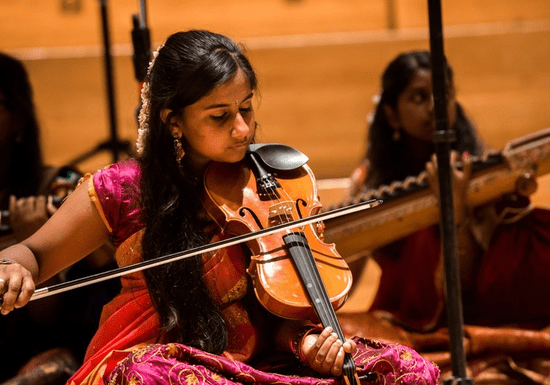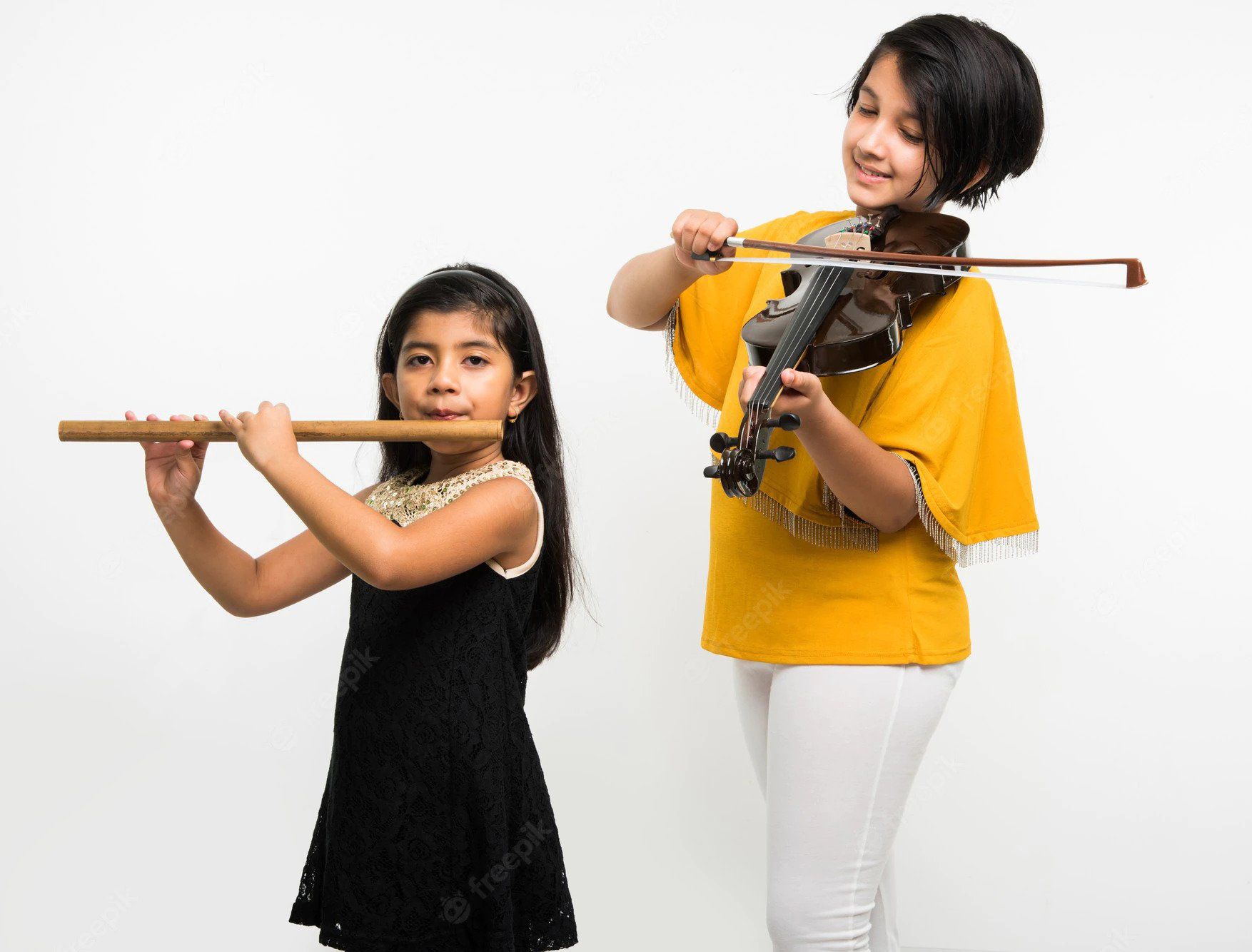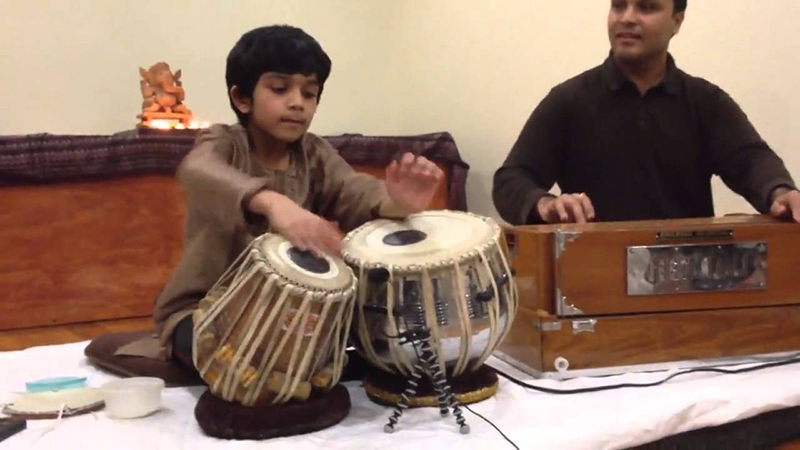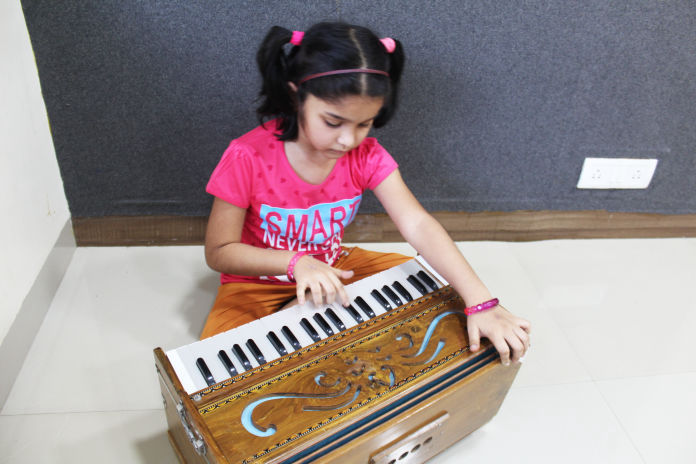
Contact Us
+91 9600003813 /
9087909667
Mail Us
info@rbnkalaikoodam.comAdmin@rbnkalaikoodam.com
Address
No.39, Radha Nagar Main Road, Chrompet, Chennai - 600 044.
close
Send a message
The veena, also spelled vina, comprises various chordophone instruments from the Indian subcontinent. Ancient musical instruments evolved into many variations, such as lutes, zithers and arched harps. The many regional designs have different names such as the Rudra veena, the Saraswati veena, the Vichitra veena and others.
The South Indian Saraswati veena, used in Carnatic classical music, is a lute. It is a long-necked, pear-shaped lute, but instead of the lower gourd of the North Indian design, it has a pear-shaped wooden piece. However it, too, has 24 frets, four melody strings, and three drone strings, and is played similarly. It remains an important and popular string instrument in classical Carnatic music.


The violin, sometimes known as a fiddle, is a wooden chordophone (string instrument) in the violin family. Most violins have a hollow wooden body. It is the smallest and thus highest-pitched instrument (soprano) in the family in regular use.The violin typically has four strings (some can have five), usually tuned in perfect fifths with notes G3, D4, A4, E5, and is most commonly played by drawing a bow across its strings. It can also be played by plucking the strings with the fingers (pizzicato) and, in specialized cases, by striking the strings with the wooden side of the bow.
Book NowThe flute is a family of classical music instrument in the woodwind group. Like all woodwinds, flutes are aerophones, meaning they make sound by vibrating a column of air. However, unlike woodwind instruments with reeds, a flute is a reedless wind instrument that produces its sound from the flow of air across an opening. According to the instrument classification of Hornbostel–Sachs, flutes are categorized as edge-blown aerophones. A musician who plays the flute is called a flautist or flutist.
Book Now

Vocal music is a type of singing performed by one or more singers, either with instrumental accompaniment, or without instrumental accompaniment, in which singing provides the main focus of the piece. Music which employs singing but does not feature it prominently is generally considered to be instrumental music as is music without singing. Music without any non-vocal instrumental accompaniment is referred to as a cappella.
Vocal music typically features sung words called lyrics, although there are notable examples of vocal music that are performed using non-linguistic syllables, sounds, or noises, sometimes as musical onomatopoeia, such as jazz scat singing. A short piece of vocal music with lyrics is broadly termed a song, although in different styles of music, it may be called an aria or hymn.
A tabla is a pair of twin hand drums from the Indian subcontinent, that are somewhat similar in shape to the bongos. Since the 18th century, it has been the principal percussion instrument in Hindustani classical music, where it may be played solo, as accompaniment with other instruments and vocals, and as a part of larger ensembles.
The tabla consists of two small drums of slightly different sizes and shapes. Each drum is made of hollowed out wood, clay or metal. The smaller drum (dayan/tabla) is used for creating treble and tonal sounds, while the primary function of the larger drum (baya/dagga) is for producing bass. They are laced with hoops, thongs and wooden dowels on its sides. The dowels and hoops are used to tighten the tension of the membranes for tuning the drums.


The Mridangam is a percussion instrument of ancient origin. It is the primary rhythmic accompaniment in a Carnatic music ensemble. In Dhrupad, a modified version, the pakhawaj, is the primary percussion instrument. A related instrument is the Kendang, played in Maritime Southeast Asia. During a percussion ensemble, the mridangam is often accompanied by the ghatam, the kanjira, and the morsing.
Book NowThe most widely-known and used free-reed aerophone in India is the harmonium and have been imported from the West. No foreign instrument, however, has caused such a commotion as the harmonium and none is used so extensively, be it in classical, light, film or folk music. It is probably the most commonly used instrument in northern India.
The Indian harmonium is not the heavy and big pedal instrument of Europe, but has been reduced to a small portable box, which is approximately two feet by one foot and about nine to ten inches high, the back of which opens to act as the bellows. On the top is a keyboard like that of a piano, but with a much smaller range, usually of about three octaves.

